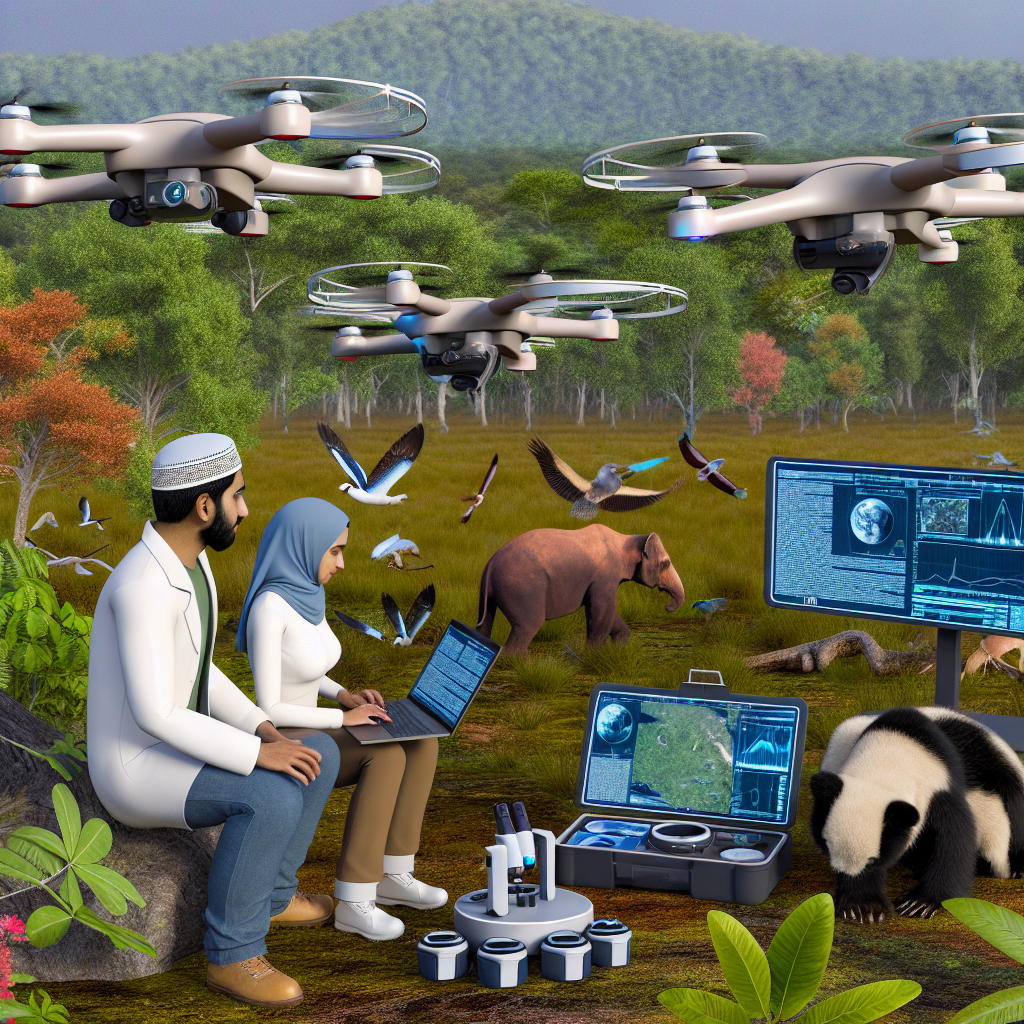AI in Environmental Conservation: Advanced Strategies for 2025
AI, sustainability, and green tech are becoming indispensable in the fight for environmental conservation. As ecosystems face unprecedented threats, leveraging the power of artificial intelligence is proving to be a transformative solution. The blend of cutting-edge technology with sustainability efforts not only aids in mitigating environmental impact but also enhances our predictive capabilities. This article delves into AI’s pivotal role in fostering a greener earth by 2025, exploring its applications, frameworks, and emerging innovations. Whether you’re a seasoned AI expert or an enthusiastic learner, our insights will equip you with knowledge to contribute effectively to this vital cause.
Table of Contents
Introduction to AI and Sustainability
Artificial intelligence has rapidly integrated into various industries, offering unprecedented capabilities for processing and analyzing large data sets. In the realm of environmental conservation, AI aids in tackling complex challenges such as climate change, biodiversity loss, and pollution. With AI technologies, we can process environmental data more effectively, develop predictive models for natural disasters, and optimize resource management strategies. These capabilities are driving the shift towards more sustainable practices, proving that AI and green tech will be indispensable partners by 2025.
Applications of AI in Environmental Conservation
Wildlife Monitoring and Protection
AI-driven tools have revolutionized wildlife monitoring. Machine learning models analyze vast datasets from camera traps and satellite imagery, identifying species and assessing population health. Organizations like the World Wildlife Fund utilize AI to combat poaching through real-time monitoring and predictive analytics. Learn more about the latest AI innovations in the field by visiting our AI Blogs.
Climate Change Mitigation
AI aids in climate modeling and simulation, providing insights into future climate scenarios. Predictive algorithms assess the impact of various mitigation strategies, guiding policymakers towards efficient solutions. Companies harness AI-powered platforms to optimize energy usage and reduce carbon footprints, embracing sustainability in operational processes.
Pollution Tracking and Management
AI technologies are used extensively for tracking pollution levels. Machine learning algorithms analyze air and water quality data, predicting pollution trends and identifying sources of contamination. Such systems are crucial for environmental agencies aiming to implement timely interventions.
Case Studies and Success Stories
Across the globe, AI has facilitated numerous success stories in environmental conservation. For instance, Conservation International’s AI-enabled drones monitor deforestation in the Amazon rainforest, enabling swift action against illegal logging. Similarly, Google’s AI-powered flood forecasting tool has significantly improved predictive accuracy, helping communities prepare for potential floods. These examples underscore AI’s potential to drive tangible environmental outcomes.
Emerging Trends and Technologies
As we advance towards 2025, several emergent AI trends indicate the direction of future environmental conservation efforts. These include the integration of AI with the Internet of Things (IoT) for smarter, interlinked ecosystems, and the rise of blockchain for enhanced environmental transparency and accountability. To stay updated with cutting-edge AI advancements, explore our GenAI Blogs.
Challenges and Solutions
Implementing AI for environmental conservation faces challenges, such as data privacy issues, technical complexities, and the need for significant computational power. However, solutions are emerging. Open data platforms and collaborations between governments, academia, and industry players are pivotal. Moreover, advancements in AI hardware are gradually reducing computational requirements, making AI tools more accessible.
Conclusion
AI’s role in environmental conservation is transformative, providing innovative tools and solutions for the sustainability sector. As we progress towards 2025, AI’s integration with other technologies will further enhance its impact on ecological protection. By investing in AI technology and supporting ongoing research, we pave the way for a sustainable future. Stay informed by subscribing to receive updates on the latest AI and environmental news here, and explore our Data Science Blogs for more insights.
FAQ
How does AI contribute to biodiversity conservation?
AI aids biodiversity conservation through species monitoring, habitat preservation analysis, and threat detection, helping to maintain ecosystem balance.
What are the biggest challenges in integrating AI for environmental purposes?
Challenges include managing large datasets, ensuring data privacy, and the high costs of AI implementation and maintenance.
Can AI predict natural disasters?
Yes, AI can enhance the accuracy of natural disaster predictions through data analysis, enabling better preparedness and response strategies.
Is AI sustainable in itself?
AI sustainability depends on the energy efficiency of computational processes and the lifecycle management of AI systems.



